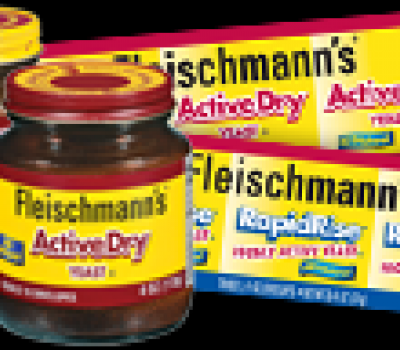All tags
5 star recipes
A
air fry
alcohol beverages
Beverages
BREADS
Breakfast
cakes
Candy
Casseroles
charcuterie boards
Chicken
chili
Chinese
Chowder
Christmas
coffee cakes
Conversion Chart
cookies
dale.
DESSERTS
DIPS
easter
fish
Freezer Meals
Friends
Halloween
herbs/spices
jan's canning
jan's ice cream
meat
Mexican
MISC
Muffins
new years
pasta
Pastry
Pies
polish
Potatoes
potpourri
pressure canner
QUICK BREADS
Rice
Salad Dressings
SALADS
sandwich spreads
Sandwiches
Seafood
Skillet
SNACKS
Soup
st. patrick
Stews
summer
t
Thanksgiving
Vegetables

How to Make Yeast Bread
Ingredients
Instructions
A step-by-step guide to kneading, shaping and baking yeast bread.Step 1
Turn dough onto a lightly floured surface; shape into a ball. Fold top of dough toward you. With palms, push with a rolling motion away from you. Turn dough a quarter turn; repeat until dough is smooth and elastic. Add flour to surface only as needed.
Step 2
Place the dough in a bowl greased with butter, oil or nonstick cooking spray. Turn dough over to grease the top. This prevents the dough from drying out while rising. Cover with a clean towel or plastic wrap.
Step 3
Place covered dough in a warm draft-free area (80° to 85°) until dough has doubled. (Place covered bowl on the top rack in a cold oven with a pan of steaming hot water underneath. Or turn your oven to its lowest setting for no longer than 40 to 50 seconds. Turn off and let dough rise in the oven.)
Step 4
Press two fingers 1/2 in. into the dough. If the dents remain, the dough is doubled in size and ready to punch down.
Step 5
To punch dough down, make a fist and push it into the center. Gather the dough to the center and shape into a ball. Place on a floured surface.
Step 6
Divide the dough if the recipe directs; shape into balls. Roll each ball into a 12-in. x 8-in. rectangle. You will hear air bubbles "popping" as you roll the dough.
Step 7
Dust off any loose flour that might cling to the dough. Beginning at the short end, roll up each rectangle firmly. If it's too loose, you'll see air pockets when the bread is cut. If it's too tight, the bread will crack while baking.
Step 8
Pinch seam and each end to seal. Place seam side down in a greased pan; cover with a towel and allow to double in size in a warm draft-free area.
Step 9
When dough has doubled, remove towel; place pans several inches apart in the center of the preheated oven.
Step 10
When bread is golden brown, test for doneness by carefully removing loaves from pans and tapping the bottom crusts. If it sounds hollow, the bread is done. If the bread is browning too fast and it's not done, tent with foil and continue baking. Unless recipe directs otherwise, immediately remove breads from pans. Cool completely on a wire rack.
Methods for Yeast Breads
Traditional Mixing Method for Yeast Breads
Step 1
Heat liquid to 110° to 115°, using a thermometer. Measure liquid and place in a large mixing bowl. Add active dry yeast; stir until dissolved.
Step 2
Add sugar, salt, fat, eggs (if using) and about half of the flour. Beat with an electric mixer or by hand until smooth.
Step 3
Gradually stir in enough of the remaining flour by hand to form a dough of consistency stated in the recipe.
Rapid Mixing Method for Yeast Breads
Step 1
In a mixing bowl, combine flour, sugar, active dry or quick-rise yeast, salt and any seasonings.
Step 2
In a saucepan, heat liquid ingredients (water, milk, honey, molasses and butter or oil) to 120°-130°. Add to dry ingredients; beat just until moistened.
Step 3
Add any eggs; beat until smooth. Gradually stir in enough of the remaining flour to form a dough of the desired consistency.
Problem-Solving Pointers for Yeast Bread
Bread did not rise well or did not rise at all:
•Yeast was not fresh. Next time, proof the yeast.
•Liquid was too hot and killed the yeast.
•Dough was kneaded too much or not enough.
•Oven temperature was too low.
Bread is heavy and coarse:
•There's too much liquid or not enough flour in dough.
•Next time, use a lower-gluten flour such as whole wheat, rye or oat.
•Dough was allowed to rise too long.
•Oven temperature was too low.
Bread is dry and crumbly:
•Too much flour was used.
•Dough was allowed to rise too long.
Bread is doughy on the bottom or has a slightly gummy texture:
•Bread was underbaked.
•Bread stayed in the pan too long after baking.
Loaf sinks in the center:
•Dough rose too long during the second rise time in the pan.
Bread has large holes:
•Dough was not kneaded enough.
•Air was not compressed out of the dough during shaping.
Bread crumbles when cut:
•Too much flour was used.
•Dough was kneaded too much or not enough.
•Dough was allowed to rise too long or not long enough.
•Oven temperature was too high.
Bread has a yeasty taste:
•Dough had too much yeast or rose too long.
MY NOTES